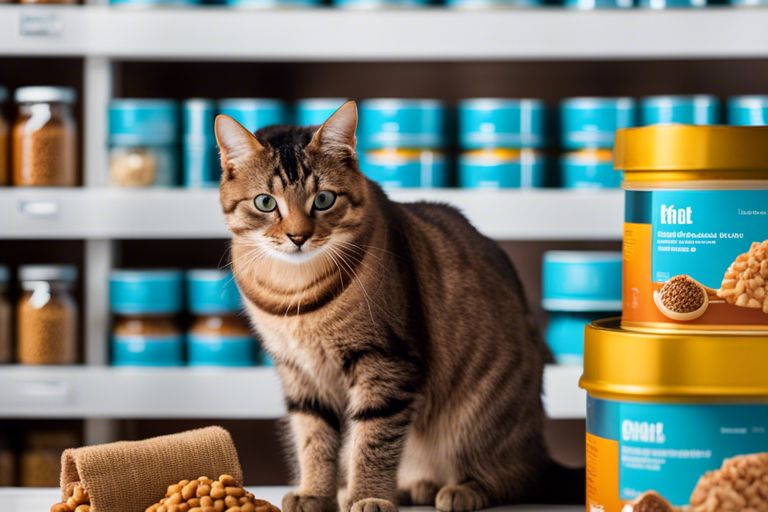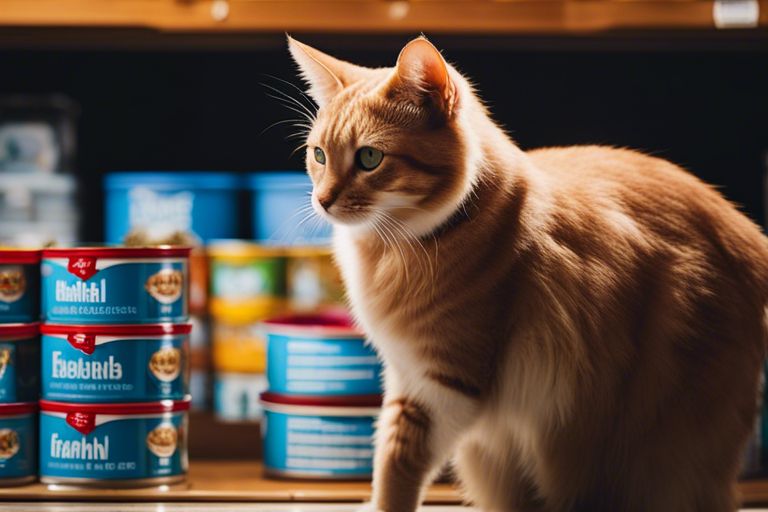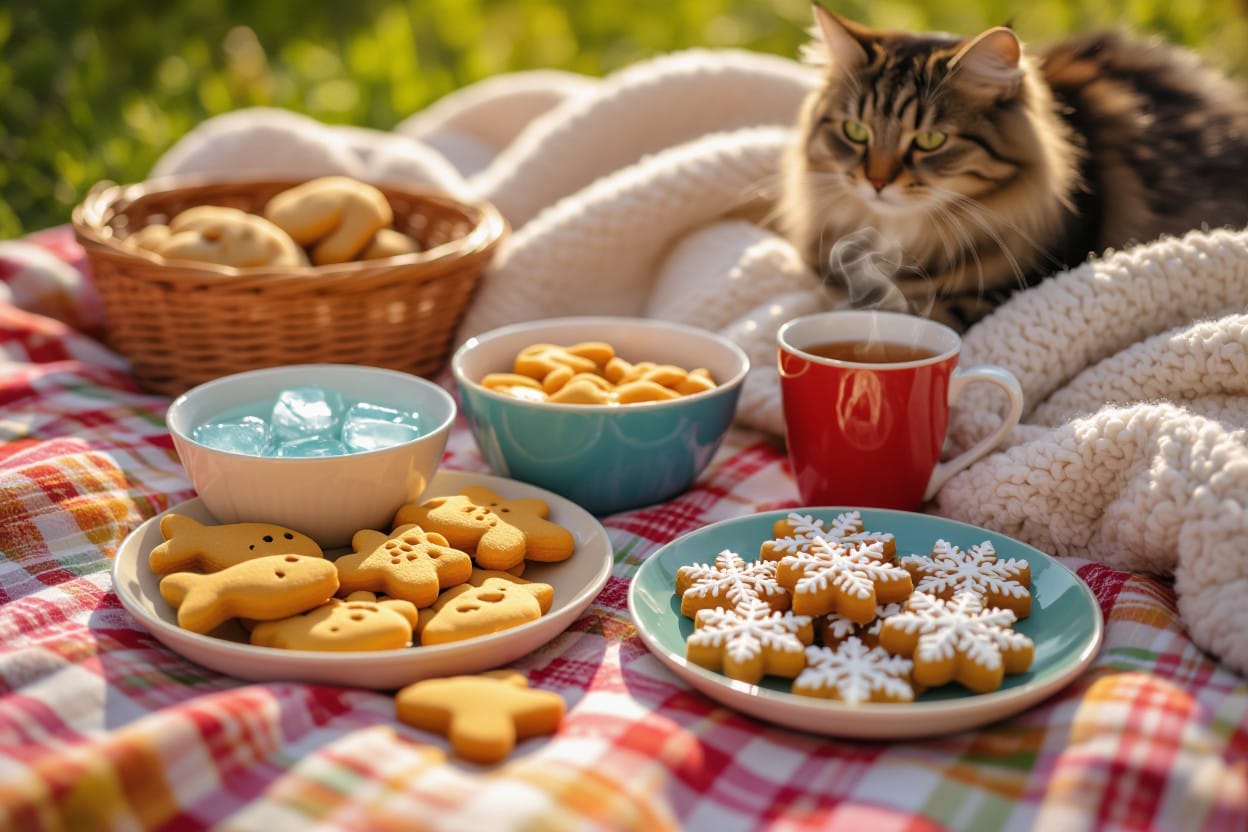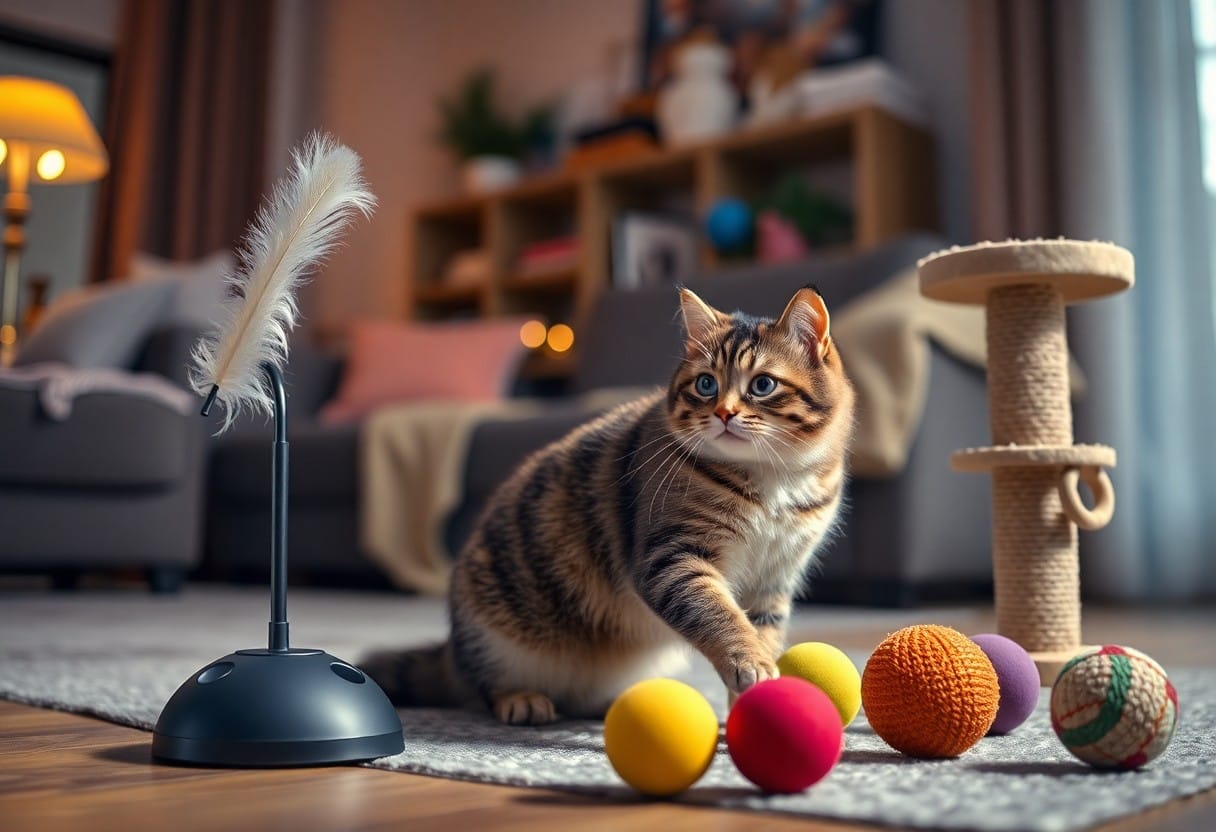This guide will equip you with the skills to decipher cat food labels like a seasoned pro. Understanding the information on pet food labels is important for ensuring your feline friend gets the nutrition they need. By mastering the art of reading cat food labels, you can make informed decisions and select the best quality food for your beloved pet.
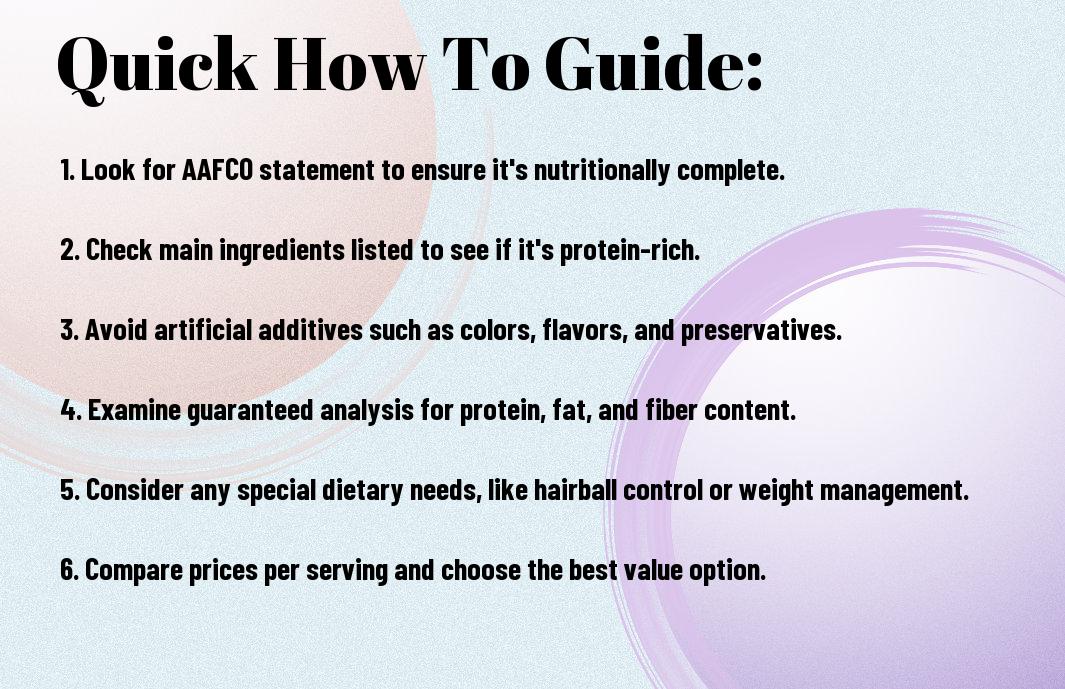
Key Components of a Cat Food Label
Product Name and Brand Information
The first thing you want to look for when reading a cat food label is the product name and brand information. This will give you a quick idea of what type of food it is and who it is made by. Any reputable cat food brand will clearly display its name on the label along with the specific product name, such as ‘Chicken and Rice Recipe’ or ‘Seafood Feast’.
It’s important to pay attention to the brand information as well, as certain brands may have a better reputation for using high-quality ingredients or following stricter manufacturing standards. By familiarizing yourself with different brands, you can make more informed decisions about the food you are feeding your feline friend.
Identifying the Net Weight and Serving Size
When looking at a cat food label, you will also want to identify the net weight and serving size information. Food packages will display the weight of the product, usually in pounds or kilograms, as well as the recommended serving size for your cat. It is crucial to follow these serving size guidelines to ensure your cat is getting the proper nutrition without overeating.
For instance, a package of cat food may state that the net weight is 5 pounds and recommend a serving size of 1/2 cup per day for an average adult cat. By understanding the net weight and serving size information, you can better manage your cat’s diet and ensure they are maintaining a healthy weight.
Nutritional Adequacy Statement
Understanding AAFCO Standards
The nutritional adequacy statement on cat food labels is a critical piece of information for pet owners. This statement indicates whether the food meets the minimum nutritional requirements set by the Association of American Feed Control Officials (AAFCO). Assuming a food carries an AAFCO statement, it means the formulation has either undergone feeding trials or meets the AAFCO nutrient profiles for a specific life stage.
Interpreting Life Stage Appropriateness
The AAFCO has established standards for different life stages, including growth, adult maintenance, gestation/lactation, and all life stages. Standards for each life stage vary in terms of required nutrient levels to cater to the specific needs of cats at different stages of life. When interpreting life stage appropriateness, it is crucial to match the life stage mentioned in the nutritional adequacy statement with the needs of your cat.
Ingredients List Deep Dive
Many cat owners find the ingredients list on cat food labels to be overwhelming and confusing. To read cat food labels like a pro, it’s important to understand how ingredients are listed and what to look for. One crucial aspect to pay attention to is the order of ingredients, as they are listed by weight, with the heaviest ingredient listed first.
How-to Decode Ingredients by Weight
Ingredients are listed in descending order by weight, with the most predominant ingredient listed first. This means that the first few ingredients listed make up the majority of the cat food. When scanning the ingredients list, focus on the first few ingredients to get a sense of the overall quality of the food.
Tips for Spotting High-Quality Protein Sources
- Look for specific sources of protein, such as chicken, beef, or fish.
- Avoid generic terms like “meat by-products” or “animal digest,” which may indicate lower-quality protein sources.
Protein is a crucial nutrient for cats, so it’s important to ensure that the protein sources in their food are high-quality. Look for specific named protein sources, such as chicken, turkey, or salmon, as these are more nutritious and easier to digest for cats. Assume that ingredients like “meat by-products” or “animal digest” are lower-quality protein sources and may not provide the same benefits as named meats.
Recognizing Fillers and By-Products
Some cat foods contain fillers and by-products that offer little nutritional value and may even be harmful to your cat’s health. Examples of fillers include corn, wheat, and soy, which are used to bulk up the food but provide little in terms of important nutrients.
Another aspect to watch out for is by-products, which are secondary products of the human food industry, such as organs, beaks, and feet. While some by-products can be nutritious, others may be of lower quality. When scanning the ingredients list, be cautious of fillers and by-products and opt for cat foods with high-quality, named protein sources for optimal feline nutrition.
Guaranteed Analysis Breakdown
Protein, Fat, Fiber, and Moisture Content
After understanding the importance of the guaranteed analysis on cat food labels, it’s crucial to explore deeper into the breakdown of specific components. The guaranteed analysis typically includes protein, fat, fiber, and moisture content percentages. These values provide insight into the nutritional composition of the cat food and can help you make an informed decision about your feline friend’s diet.
Additional Nutrients and Supplements
The guaranteed analysis section also includes information about additional nutrients and supplements present in the cat food. This may include imperative vitamins, minerals, and other additives that contribute to a balanced diet for your cat. Understanding these additional nutrients is imperative for ensuring that your cat is receiving all the necessary components for optimal health and well-being.
For instance, omega-3 fatty acids are often included in cat foods to support healthy skin and a shiny coat. Taurine is another crucial nutrient for cats, as it helps maintain proper heart function and vision. By paying attention to the additional nutrients and supplements listed in the guaranteed analysis, you can ensure that your cat’s nutritional needs are being met.
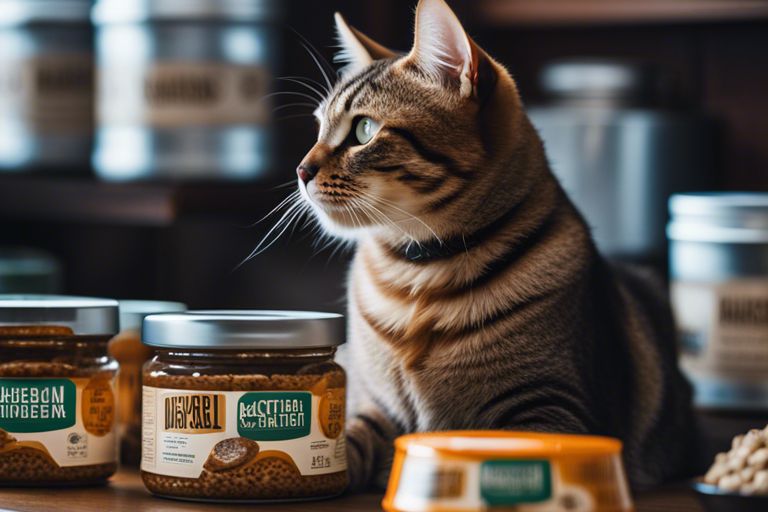
Deciphering Additives and Preservatives
Now, when it comes to reading cat food labels like a pro, understanding additives and preservatives is crucial. Additives can enhance the flavor, texture, or appearance of the food, while preservatives help extend its shelf life. It’s necessary to know the difference between natural and synthetic additives, as well as how to identify potential allergens in the ingredients list.
Natural versus Synthetic Additives
For natural versus synthetic additives, it’s important to note that not all additives are bad for your cat. Natural additives like vitamins and minerals can provide necessary nutrients. On the other hand, synthetic additives such as artificial colors, flavors, and preservatives may not offer any nutritional value and could potentially be harmful in the long run. When in doubt, opt for cat foods with minimal artificial ingredients and focus on those with natural additives.
Identifying Potential Allergens
You should pay close attention to the ingredients list when identifying potential allergens in your cat’s food. Common allergens for cats include beef, dairy, and certain grains like wheat and corn. If your cat has known allergies or sensitivities, look for specific ingredients to avoid. It’s also a good idea to introduce new foods gradually to monitor any allergic reactions. Additionally, consulting with your veterinarian can help determine if your cat has any specific dietary requirements or allergies that should be taken into consideration when choosing a cat food formula.
By understanding natural versus synthetic additives and being able to identify potential allergens, you can make more informed decisions when selecting the best cat food for your furry friend. Remember that each cat is unique, so what works for one may not work for another. When in doubt, consult with your veterinarian for personalized recommendations to ensure your cat is getting the nutrition they need without any harmful additives or allergens.
Feeding Guidelines and Caloric Content
Despite the wealth of information on cat food labels, one of the most crucial sections to pay attention to is the feeding guidelines and caloric content. This provides instructions on how much to feed your furry feline friend and the amount of calories they will be consuming with each serving.
Tips for Matching Food Portions with Your Cat’s Energy Needs
- Determine your cat’s activity level and adjust the portion size accordingly.
- Consult with your veterinarian to ensure you are providing the right amount of food for your cat’s age, weight, and health status.
Remember that each cat is unique, so it’s important to monitor your cat’s weight and energy levels regularly to make any necessary adjustments to their diet. Though, overfeeding can lead to obesity and other health issues in cats.
Factors Affecting Your Cat’s Dietary Requirements
- Age: Kittens, adults, and seniors have different nutritional needs.
- Activity Level: A sedentary cat will require fewer calories than an active one.
To ensure your cat is getting the right nutrients, consider factors such as age, weight, activity level, and any underlying health conditions when selecting their food. Assume that factors like pregnancy or lactation will also affect your cat’s dietary requirements.
Understanding Food Type Variations
The Difference Between Wet, Dry, and Semi-Moist Foods
Variations in cat food types can play a crucial role in your feline’s diet. Understanding the difference between wet, dry, and semi-moist foods is important in providing the right nutrition for your pet. Wet cat food has a higher moisture content, which can help with hydration, but may require more frequent feeding due to its lower calorie density. Dry cat food is convenient and can help with dental health, but may not be as appealing to picky eaters. Semi-moist food offers a middle ground between wet and dry options, providing a balance of moisture and convenience.
Specialized Diets: Grain-Free, Organic, and Prescription Formulas
Understanding specialized diets such as grain-free, organic, and prescription formulas can cater to specific dietary needs or preferences of your cat. Grain-free diets exclude grains like corn, wheat, and soy, which may be beneficial for cats with allergies or sensitivities. Organic cat food uses ingredients that are grown without synthetic fertilizers or pesticides, offering a more natural option. Prescription formulas are specially formulated by veterinarians to address specific health issues like urinary tract problems or weight management.
Different cats may have varying requirements, so consulting with a veterinarian can help determine the best diet for your feline friend. These specialized diets can offer solutions for cats with specific conditions or who may benefit from a tailored nutrition plan.
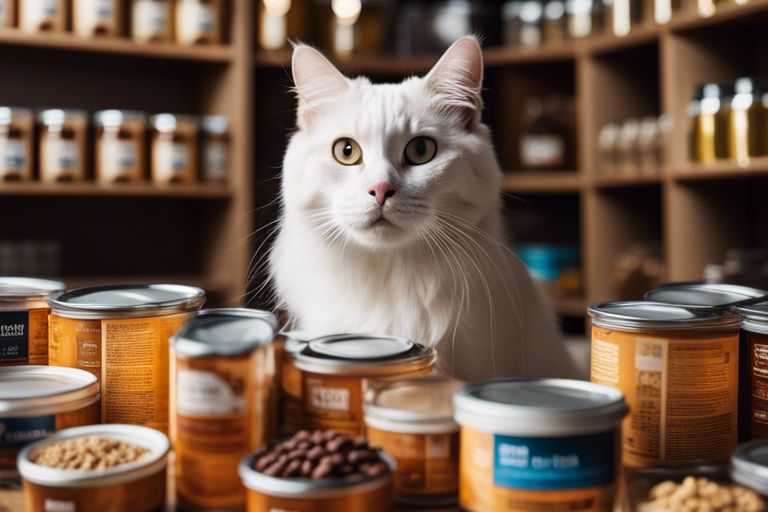
Evaluating Food Safety and Recalls
Not all cat food brands are created equal when it comes to food safety and handling recalls. As a responsible pet owner, it is crucial to pay attention to these aspects as they directly impact your cat’s health and well-being.
Spotting Red Flags in Cat Food Brands
One key way to evaluate the safety of a cat food brand is to look for potential red flags on the label. Watch out for vague or generic ingredient listings, artificial additives, and lack of specific information about where and how the food is produced. Brands that are transparent about their sourcing and manufacturing processes are more likely to prioritize food safety.
Staying Informed on Current Recalls
Even the most reputable cat food brands can experience recalls due to contamination issues or other safety concerns. Stay informed by regularly checking the brand’s website or signing up for alerts from the Food and Drug Administration (FDA) or the manufacturer. In case of a recall, immediately stop feeding the affected product to your cat and follow the instructions provided by the brand for a refund or replacement.
Understanding the importance of food safety and staying vigilant about recalls will help you make more informed decisions when choosing the best cat food for your feline companion.
Tips for Comparing Brands and Formulas
For cat owners looking to make an informed decision when choosing a cat food brand, comparing labels is important. Here are some tips to help you navigate the world of cat food choices:
| Price | Quality |
| Compare price per ounce or pound | Check for real meat as the first ingredient |
| Consider budget constraints | Avoid artificial colors and fillers |
| A higher price doesn’t always mean better quality | Look for important nutrients like taurine |
Price vs. Quality: Factors to Consider
Now, when comparing brands and formulas, it is important to consider the balance between price and quality. Here are some factors to keep in mind:
- Price per ounce or pound
- Real meat as the first ingredient
After evaluating the price and quality, recognizing the importance of important nutrients like taurine and avoiding artificial colors and fillers can help you make a more educated decision for your feline friend.
How-to Evaluate Customer Reviews and Testimonials
Evaluate customer reviews and testimonials to get a sense of the overall satisfaction and experience other cat owners have had with a particular brand or formula. Look for patterns in feedback that may indicate consistency in quality or common issues to be aware of.
Tips for evaluating customer reviews include considering the credibility of the source, looking for detailed descriptions of results, and being wary of overly positive or negative reviews that might be biased. By analyzing feedback from a variety of sources, you can gauge the general reputation of a cat food brand before making a purchase.
Changing Diets and Transitioning Foods
How-to Safely Introduce New Foods
The key to successfully changing your cat’s diet is to do it gradually. Abruptly switching to a new food can upset your cat’s stomach and lead to digestive issues. Start by mixing a small amount of the new food with their current food. Gradually increase the proportion of the new food over several days to allow your cat’s digestive system to adjust.
Monitoring Your Cat’s Response to Diet Changes
If you notice any signs of gastrointestinal upset, such as vomiting, diarrhea, or loss of appetite, while transitioning to a new food, it’s important to slow down the process. Take a step back and reintroduce their old food, giving your cat’s stomach a chance to settle before trying again. Monitor your cat’s behavior and stools closely throughout the transition period to ensure they are adapting well to the new diet.
If your cat continues to have trouble adjusting to the new food, consult your veterinarian for advice on alternative options or potential underlying health issues that may be causing the digestive upset.
Safely
It is crucial to introduce new foods to your cat safely to avoid any digestive issues or other health concerns. By taking a gradual approach and closely monitoring your cat’s response to diet changes, you can ensure a smooth transition to a new food without any adverse effects on your feline friend’s health.
To wrap up
Presently, you are equipped with the knowledge and tools needed to read cat food labels like a pro. By understanding the key components of a cat food label, such as ingredients, guaranteed analysis, and feeding guidelines, you can make informed decisions about what to feed your feline friend. Remember to look for high-quality protein sources, balanced nutrients, and avoid any potential allergens or fillers. Your cat’s health and well-being depend on the food you choose, so take the time to read labels carefully and choose the best option for your cat.
FAQ
Q: Why is it important to read cat food labels?
A: It is crucial to read cat food labels to ensure you are providing your cat with a balanced and nutritious diet that meets their specific dietary needs.
Q: What should I look for when reading a cat food label?
A: Look for imperative nutrients such as protein, fat, vitamins, and minerals. Also, check for the AAFCO statement to ensure the food is complete and balanced for your cat’s life stage.
Q: How can I determine the quality of ingredients in cat food?
A: Check the ingredient list and prioritize whole protein sources like chicken or fish. Avoid foods with fillers, by-products, and artificial additives.
Q: What does ‘crude protein’ and ‘crude fat’ mean on a cat food label?
A: ‘Crude protein’ represents the total amount of protein in the food, while ‘crude fat’ indicates the total fat content. These percentages give you an idea of the food’s nutritional composition.
Q: Are there any red flags to watch out for on cat food labels?
A: Watch out for vague terms like “meat by-products” or “animal digest,” excessive fillers like corn or wheat, and artificial colors or preservatives. These are indicators of lower quality cat food.
